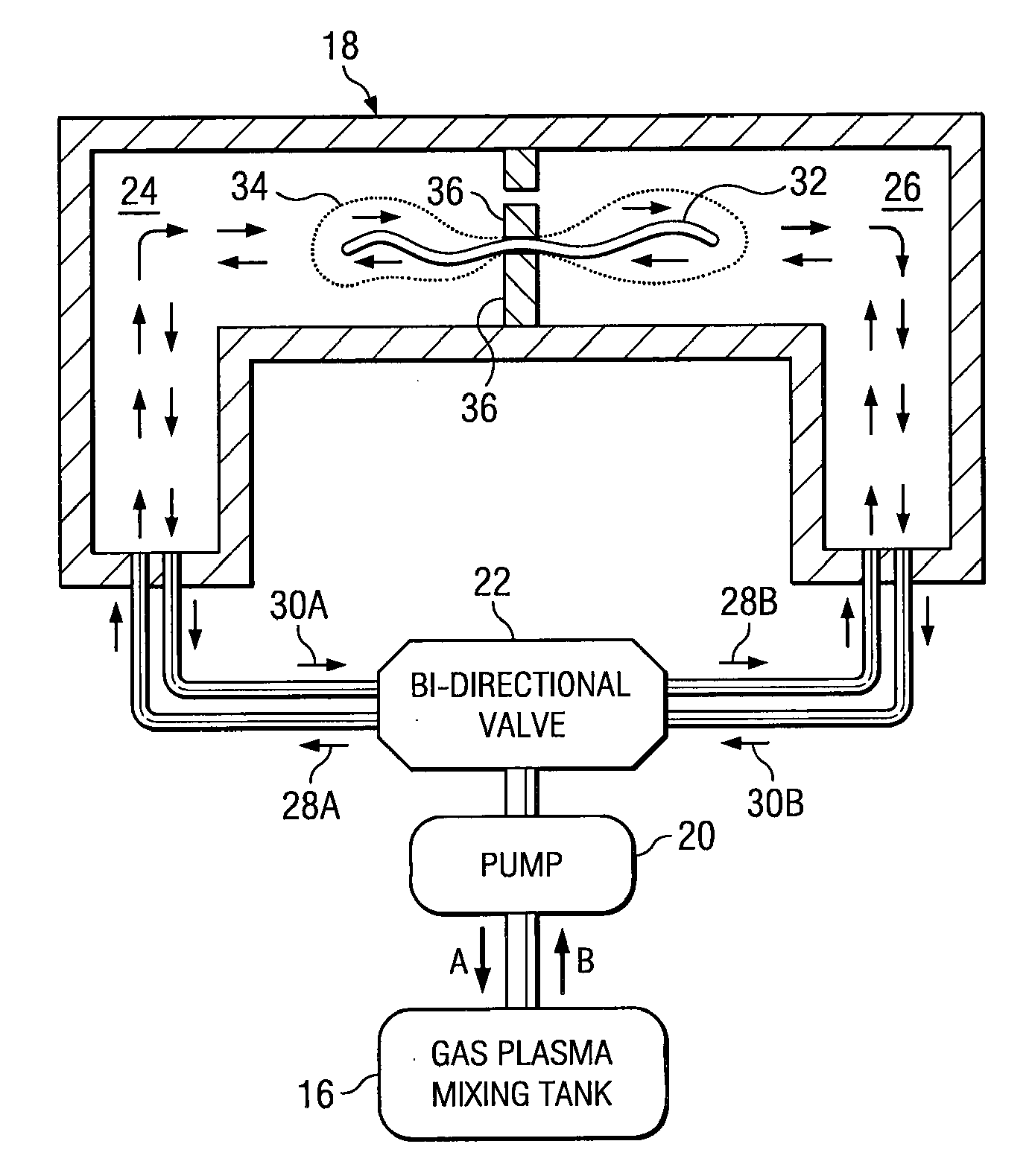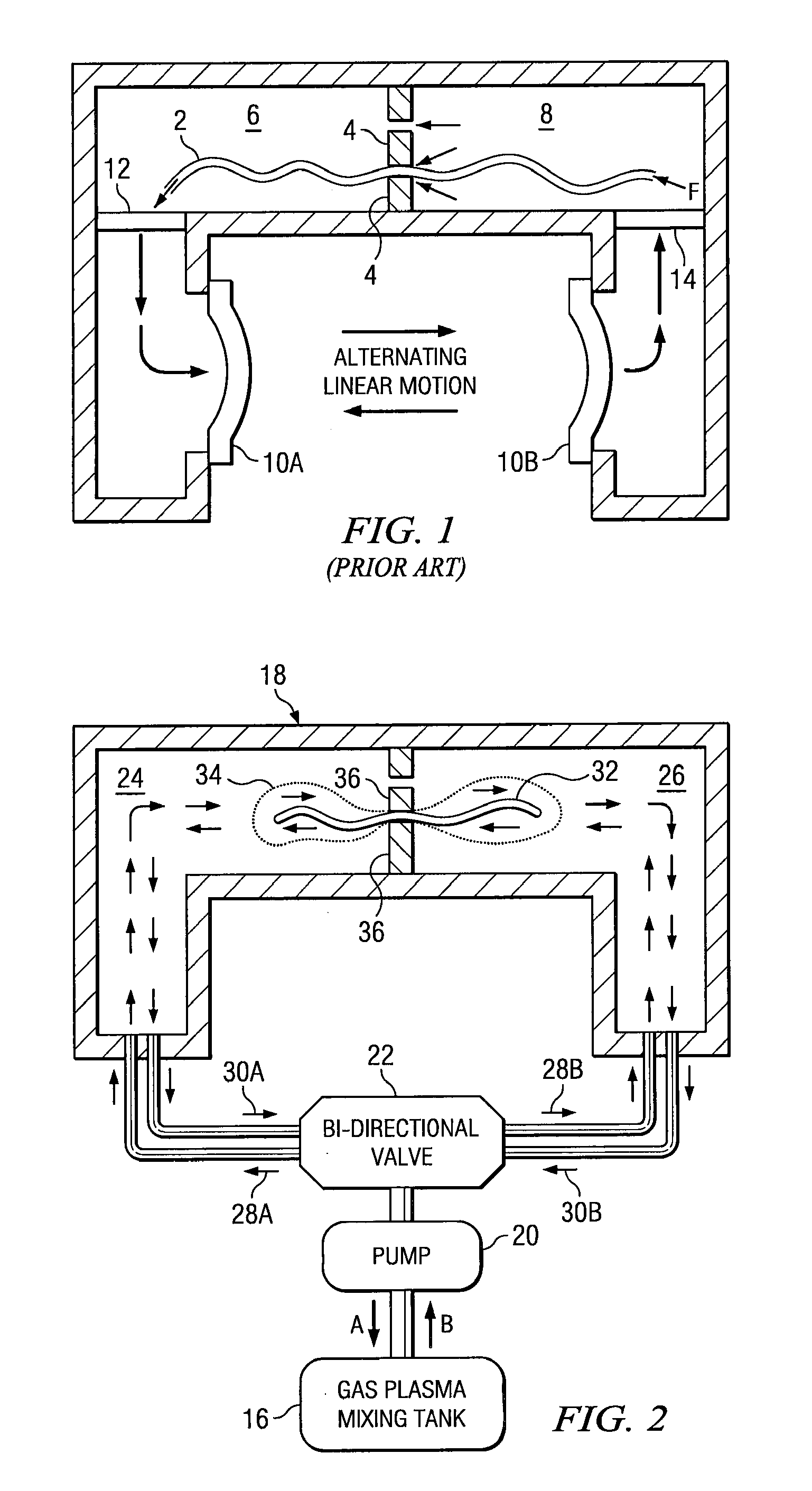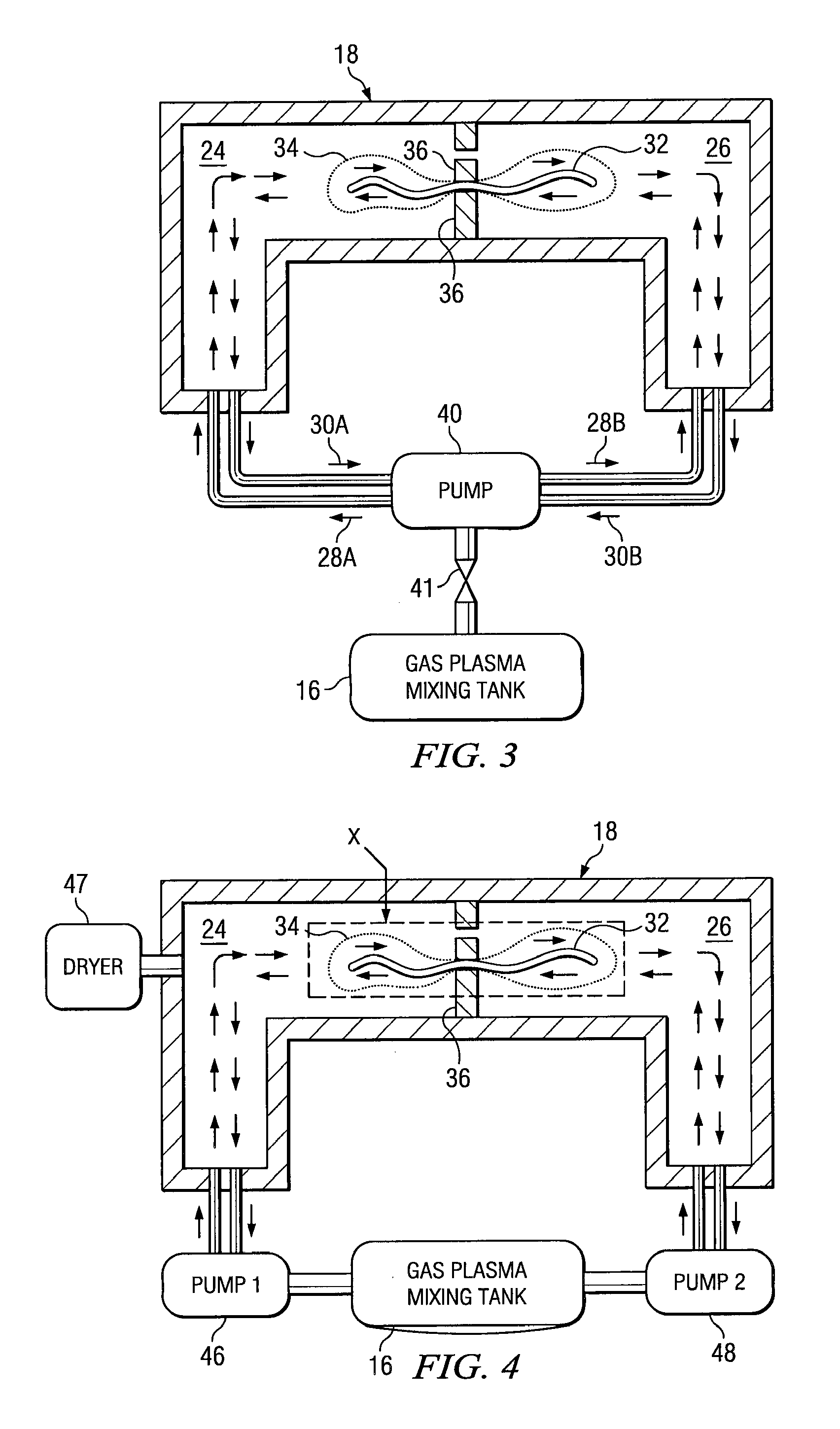Sterilizing apparatus and method
- Summary
- Abstract
- Description
- Claims
- Application Information
AI Technical Summary
Benefits of technology
Problems solved by technology
Method used
Image
Examples
example 1
[0048] The purpose of this test is to document the results of engineering characterization testing performed on a automatic endoscope reprocessor, the Langford I.C. Systems Sterilizer Cleaner (see U.S. Pat. No. 5,906,802 for layout and guidance in the use of this reprocessor). Testing was performed on a Cleaner, Sterilizer Breadboard.
[0049] The biopsy lumen of three bronchoscopes were loaded with Birmingham Soil (much more than required by FDA test standards) and inoculated with pathogens from an American Society of Test Methods kit. The scopes were left sitting for a 24 hour time period to permit some drying. Using the same Langford I.C. Systems Sterilizer Cleaner liquid-displacement settings as described, each colonoscope was subjected to one wash cycle at 10 psi for 5 min with a use concentration of 2.5% of enzymatic cleaner in 10 liters of water. The preferred rate of “liquid displacement” (i.e., the back-and-forth liquid cycling rate in the item-washing chamber of the Steriliz...
example 2
[0051] A surgical item is placed in a multi-chamber reprocessor and cleaned as above. The item is then packaged and sealed in a cellulose envelope and transferred to a chamber separate from the cleaning chamber. The separate chamber includes a fluid port to bi-directionally inject gas into the chamber, with a pump alternately applying positive pressure to the chamber and a vacuum to evacuate the chamber. The separate chamber includes radio frequency electrodes to generate the requisite radio frequency signal. The plasma is generated by evacuating the chamber, introducing a gas or vaporized liquid and turning on the power to the electrodes. The plasma is generated in the present process in the same manner as in known prior art plasma sterilization system (e.g., U.S. Pat. No. 4,643,876). The surgical item is exposed from 5-30 minutes to the plasma.
[0052] By way of example, hydrogen peroxide is injected in the form of an aqueous solution of hydrogen peroxide containing from about 3% t...
PUM
 Login to View More
Login to View More Abstract
Description
Claims
Application Information
 Login to View More
Login to View More - R&D
- Intellectual Property
- Life Sciences
- Materials
- Tech Scout
- Unparalleled Data Quality
- Higher Quality Content
- 60% Fewer Hallucinations
Browse by: Latest US Patents, China's latest patents, Technical Efficacy Thesaurus, Application Domain, Technology Topic, Popular Technical Reports.
© 2025 PatSnap. All rights reserved.Legal|Privacy policy|Modern Slavery Act Transparency Statement|Sitemap|About US| Contact US: help@patsnap.com



